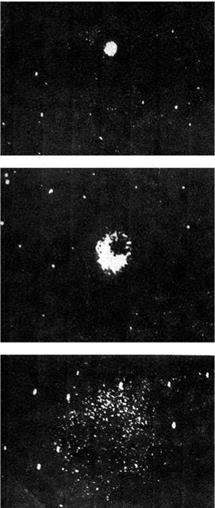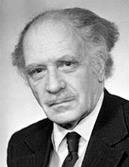SECOND COSMIC SHIP
Although there was much celebration at the achievement of the First Cosmic Ship, Korolev still faced the task of hitting the moon and doing so before the Americans. In March, the Americans at last passed the moon, but the accuracy of Pioneer 4 was much less than the First Cosmic Ship, for Pioneer 4 missed the moon by 60,015 km. The first half of 1959 saw continued Soviet difficulties with the R-7 launcher and a new one was not ready until the summer. The moon probe itself was slightly modified, the payload being heavier at 390 kg and received the designator Ye-1a. The first attempt at launch had been planned for 16th June, but the upper stage had been incorrectly fuelled and had to be unloaded and then refilled. It did not matter in the end, for when the probe was launched two days later on 18th June 1959, the inertial guidance system failed at 152 sec and the rocket crashed out of control and was exploded on ground command.
The fix took three months and the next rocket counted down on 9th September. Ignition took place, but the engines did not build up sufficient thrust for the rocket to take off. This was what became known in American terminology as a pad abort. Korolev must have been extremely frustrated at this stage, for 13 months after the first attempt, he still had not hit the moon.
The 390.2 kg Second Cosmic Ship was eventually sent up on 12th September. The upper stage reached the intended escape velocity of 11.2km/sec and then the spacecraft separated from the upper stage. Transmissions began at once, using three transmitters working on 183.6,19.993 and 39.986 megacycles. The signals told ground control that its course was, this time, dead centre and Radio Moscow quickly announced that the rocket would reach the moon at 00: 05 on the 14th September. The ship spun slowly around its axis, once every 14 min. The final stage also sent back radio signals on 20 MHz and 19 MHz as it headed away.
To mark the visual progress of the rocket, the Second Cosmic Ship released a sodium vapour cloud on the 13th, some 156,000 km out. It eventually expanded into a 650 km diameter cloud and this was spotted by observatories in Alma Ata, Byurakan, Abastuma, Tbilisi and Stalinabad. The Second Cosmic Ship carried an identical suite of scientific instruments to the first, although Shmaia Dolginov’s magnetometer had been modified to reduce the range of measurement to between —750 and +750
|
The Second Cosmic Ship |
gammas, where a response was considered more likely. It took measurements every minute during the flight out and confirmed the observations of the First Cosmic Ship. As the probe neared the moon, the instruments were working perfectly and were searching for lunar magnetic and radiation fields (none were found when the last measurement came in 55 km out). The Second Cosmic Ship not only encountered the solar wind met by its predecessor, but measured it. Other instruments measured alpha particles (nuclei of carbon, nitrogen), X-rays, gamma rays, high – and low-energy electrons and high-energy particles.
Korolev and the designers gathered in the control room as the Second Cosmic Ship neared the moon. The Russians had been stung by the claims that the First
|
Sodium release, the Second Cosmic Ship |
Cosmic Ship had been a fraud, or ‘a big red lie’ and this time took no chances. At Jodrell Bank, the Russians had again inconveniently launched a moon probe during a weekend. Bernard Lovell captained his local cricket team and refused all remonstra – tions to be interrupted to track the new spaceship. He was eventually persuaded to return to the observatory where a telex, hot in from Moscow, gave him not only the transmission and trajectory details but the intended time of impact. Cricket or not, this was a serious world event now. Jodrell Bank started tracking the Second Cosmic Ship the moment the moon rose over the horizon some five hours before impact was due. Round the world, radio stations went on a night-time vigil to wait for the historic moment of impact, in what must have been the first worldwide news coverage of an event taking place away from the Earth. Signals poured back loud and clear from the spacecraft against the eternal static of deep space. The Second Cosmic Ship plunged into the moon’s gravity well at an angle of 60° and a velocity of almost 3 km/sec. Then in a instant, 2 min and 24 sec after midnight, the signals were abruptly cut short and there was dead silence!
The Second Cosmic Ship had made it, reached the moon and impacted onto it at great speed. It was a bull’s eye, barely 1° west longitude and 30° north latitude. The Second Cosmic Ship crashed somewhere in a triangle shaped by the craters Archimedes, Aristillus and Autolycus in the small mare (sea) called the Marsh of Decay (Palus Putredinis), scattering hammer-and-sickle ball-shaped momentos onto the lunar surface to mark the occasion. The upper stage of the rocket followed 30 min later, though it carried no transmitter so its impact point is unknown. And the person who told the waiting world was Bernard Lovell, who got the news out first, for he confirmed that the signals had ceased and that the trajectory had intercepted the moon. Still some Americans denied the Soviet achievement. Bernard Lovell calculated the Doppler shift on the signals, proving that they came from a moving object falling fast toward the centre of the moon. He played the tape recording, with the abrupt stop, over the phone to the New York media and that seemed to satisfy most of them. By way of a thank-you for the telex, many years later he handed a tape recording of the signals to Mstislav Keldysh.
No one was more pleased than Nikita Khrushchev. He was able straightaway to present President Dwight Eisenhower with a model of the commemorative pennants which his country had just deposited on the moon. Khrushchev loved these gestures. Not only had the USSR reached the moon, but he could bring the good news in the latest Soviet aircraft. First, there was the Tupolev 104, the first successful modern jetliner. Then the Soviet Union developed the Tupolev 114. This was a massive, fast, long-range propellor-driven airliner able to fly 220 people with two decks high above the clouds. Khrushchev amazed the Americans when he flew to New York in this huge silver plane without ever stopping once for refuelling.
The scientific results of the mission of the Second Cosmic Ship were published the following spring. To do so, scientists went through 14km of teletype! Neither a magnetic field nor a radiation belt was found around the moon. The outer belt of electrons in the Earth’s charged particles reached out as far as 50,000 km. The four ion traps on the outside measured the flows of the currents of ion particles all the way out to the moon. Their concentration varied, sometimes as less than 100 particles/cm3.
|
Sergei Vernov |
But 8,000 km out from the moon, current intensities increased, suggesting the existence of a shell of a lunar ionosphere.













